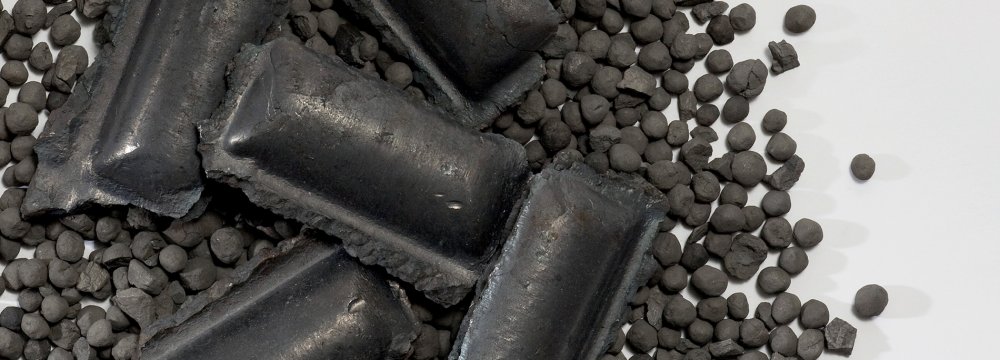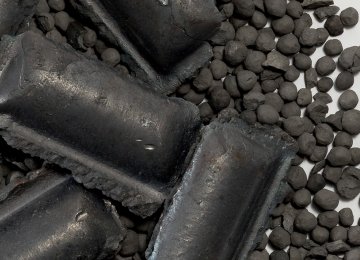Over the first three months of 2016, Iran produced 3.7 million tons of direct-reduced iron, outpacing India, with 3.6 million tons, which was formerly holding the leading position in the world, the World Steel Association declared.
Both countries decreased production though. Nevertheless, while Iran’s DRI production decreased by just 300,000 tons y-o-y, India slashed the output by around 1.2 million tons due to the decline in steel production amid higher imports, Metal Expert, a Ukraine-based provider of news and analysis on steel products and steelmaking industries, has forecast in a recent report dubbed “Iran in Focus”.
It is not clear if Iran will be able to maintain the leading position, considering that some market insiders are skeptical about any significant recovery of the country’s steel industry this year despite the removal of sanctions.
“Forecasts for GDP growth in 2016 expect Iran to achieve a growth rate of 4%.
However, about 2.6% of this growth will be attributable to a hike in economic activity in the oil and gas sector, resulting from the lifting of sanctions while the balance will come from growth in services, tourism, agricultural and industrial sectors.
“Steel consuming sectors such as construction and infrastructure are not expected to show a sizable uptick until 2017 and so steel demand is mostly expected to experience another year of stagnation this year,” an Iranian Steel Producers Association official told Metal Expert.
At the same time, India is forecasted to cut steel imports by 60% to 4.5 million tons this year by introducing import duties and extending a protective duty against foreign hot rolled coil up to 2018.
This will allow local producers to take their market share, assessed by Institute of Steel Growth and Development to be 7 million tons.
Exports Hardly Possible in Short Term
Despite being a leading DRI producer in the world, Iran has its metallized product capacities underutilized due to weak domestic demand and barriers in export markets.
While the local market might give support to DRI output already in mid-term perspective, the future of export segment is unclear.
At present, the country’s DRI capacities stand at around 23.5 million tons.
Despite DRI being used by most Iranian mills, its production is quite low at present mainly due to the steady decline in the country’s steel output amid weakening demand for finished products.
Producers equipped with their own DRI-modules are state-owned and are working at a rate not less than 85%, while smaller companies, which purchase DRI from the local market, are using around 30% of their capacity. As a result, the estimated volume of DRI produced in Iran in 2015 is 14.6 million tons, according to World Steel Association, which corresponds to 62% utilization rate.
DRI export is a subtle point for Iran at present due to the lack of locally-produced pellets and technological issues.
Currently, pelletizing capacity in Iran stands at 24.5 million tons. This volume is enough to produce around 17 million tons of DRI. To feed the actual 23.5 million-ton capacity, the country needs an extra 10 million tons of pellets.
Assuming the implementation of projects in DRI and pellet segments that were over 50% complete in 2015, the deficit may reach a larger scale in the coming years, Iranian Steel Producers Association estimates.
Additional volumes can be sourced from Oman and India. In particular, Indian producer Kudremukh Iron Ore Company Limited intends to supply at least 1 million tons per year of pellets to Iran.
The second reason is of technological origin and goes back to the period of sanctions.
According to American DRI equipment producer Midrex, under the international blockade, import of HBI and HDRI equipment was forbidden for Iran.
Thus, a majority of the domestic mills are equipped with CDRI plants, which have relatively higher operation costs than HBI (hot briquetted iron) and HDRI (hot direct reduced iron) units.
The use of HDRI can increase liquid steel production by 20%, resulting in $10/ton savings in operating cost. What is more, cold DRI (CDRI) should not be transported over long distances and needs specific handling if carried by sea, according to Midrex experts.
If these two issues are resolved, the perspective of DRI export may open for Iran in the long run. Nevertheless, it is quite questionable due to the country’s bold plans to increase steel output to 55 million tons by 2025.
Besides that, the transition to new technologies is a costly and time-consuming process.
Moreover, cooperation between Iran and the US remains limited. This means if Iran decides to install HBI units, it has to either look for suppliers other than Midrex or wait until the US completely removes the sanctions.
“At the moment, DRI export is not justified for Iran, but in the future we do not exclude this possibility,” an Iranian DRI producer said.





